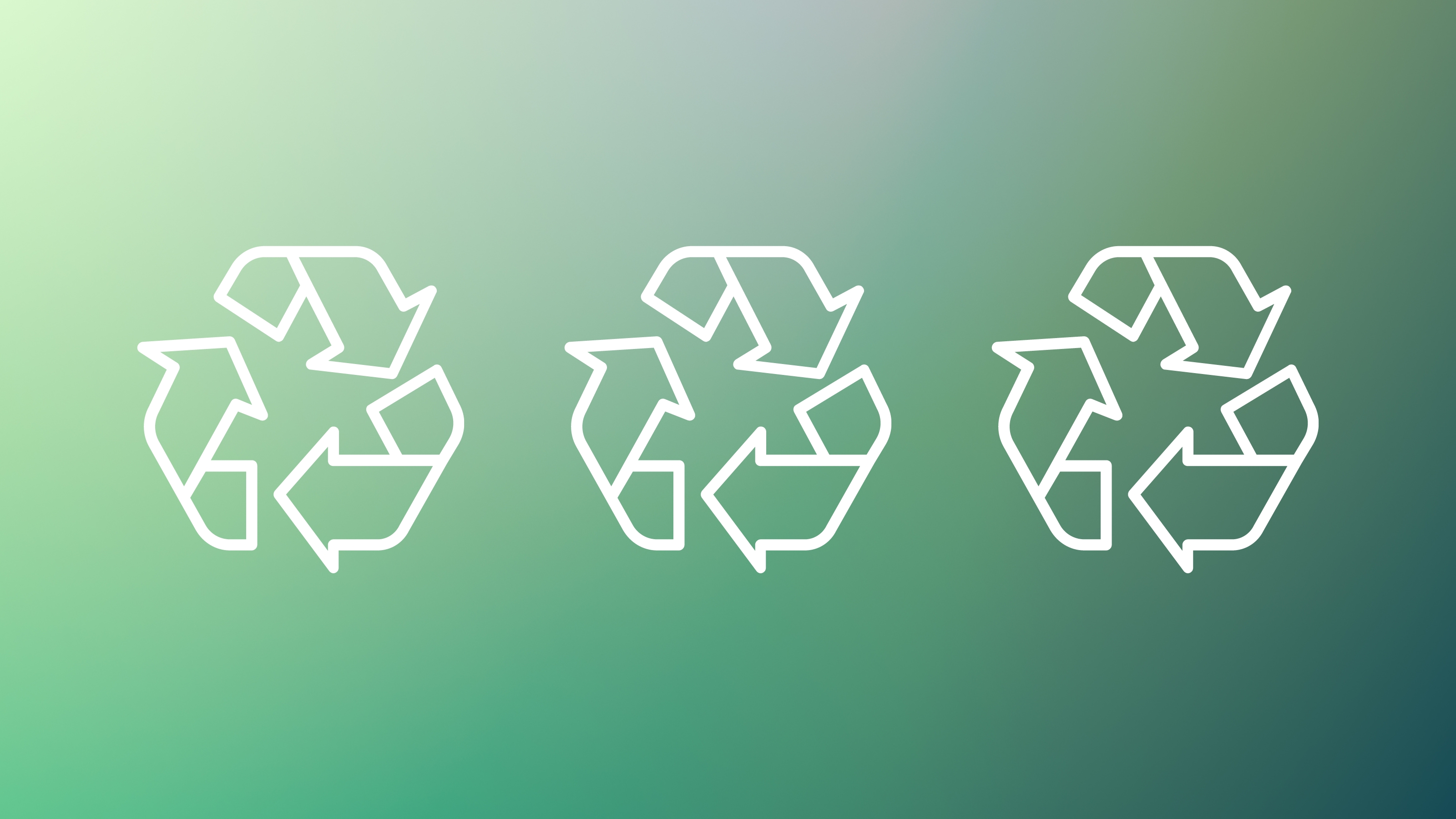7 things you can't recycle — and what to do with them instead
Am I the only one who didn't know there are things you can't recycle?


Hold on! There may be things you can't recycle floating around in your recycling bins. Recycling housewares is a great way to help the environment, but there are a few things to know before you get started.
Certain items you have lying around at home could actually be repurposed instead of thrown in the garbage. Overall, it’s a win-win for everyone involved!
I spoke to an expert, who rounded up some home items that shouldn't be recycled and what to do with them rather than tossing them into the recycling bin.
7 things you can't recycle
While you may have all the best intentions when recycling goods around your house, there are actually some things that don't belong in there. We break down what to do with items you can't recycle, from household essentials to electronics and more.
1. Textiles
Textiles and fabric, whether clothing curtains or duvet covers, can’t be recycled in the curbside recycling system. Curbside recycling systems can only handle paper, plastic, metal, and glass materials. Because textiles are made of totally different materials like cotton, wool, and polyester, they need an entirely specialized channel to recycle.
Few cities have textile recycling programs today, but New York City and select others are making strides to provide more access. Certain brands like Patagonia, H&M, and Uniqlo offer recycling drop-off programs in-store today and we can always donate usable textile items in the meantime.
When it comes to bedding, natural materials like linen and cotton (like these 100% cotton bedsheets from H&M) tend to be a more eco-friendly choice than synthetic materials like polyester.
Get small space home decor ideas, celeb inspiration, DIY tips and more, straight to your inbox!
2. Electronics
While our homes are chock full of electronics, from our TV remotes to kitchen appliances, they cannot be recycled in US curbside recycling systems. One reason is that they are complex mixes of materials. Electronics use different metals and plastics, as well as rare earth minerals, battery components, and LED screens.
"Because they are constructed in such a complicated way, they require specialty drop-off programs to be recycled, which can be found at many retailers like Best Buy and Verizon," said Economy Professional and Recycling Expert Charlotte Dreizen.
3. Tanglers
“Tanglers” are really tricky contaminants for recycling facilities. They can be any long, winding product ranging from a garden hose to a computer charger to a strand of string lights to plastic bags.
"These items wrap around the very first piece of equipment at a recycling facility whose job is to separate the paper from all other materials," explained Dreizen. "When that equipment gets all jammed up with tanglers, recycling facilities have to shut down for workers to cut them out using box cutters, which is dangerous business!"
Most tanglers have to be trashed, but many plastic bags like takeout bags can be brought to store-drop offs at grocery stores and retailers like IKEA, Target, and Walmart. Try to invest in some high-quality products, like these Room Essentials string lights from Target, that you're going to use year after year.
4. Paper towels
"Since we can recycle paper almost universally, many people think they can recycle paper towels because they’re also made from trees," said Dreizen. "But, paper towels can’t be recycled because they are so soft and flimsy that they can’t be sorted in recycling facilities."
We also need our recyclables to be clean and dry, so most paper towels that we’re using to wipe up spills or clean our kitchen counters would be contaminated with food or moisture. Instead, we can recycle paper towels in most composting programs, if you have access to one, as long as they don’t have harsh cleaners on them!
You can cut back on your waste overall by switching to reusable paper towels, like these FEBU reusable dishcloths available on Amazon.
5. Propane tanks
"Now that we’re winding down the season where we’re barbecuing in the backyard, a lot of people have empty propane tanks to contend with," said Dreizen.
Luckily, most communities have opportunities to refill propane tanks at gas stations or hardware stores which help us keep reusing propane tanks for a long time. When a propane tank is ready to be discarded, it’s always best to bring it to your community’s household hazardous waste drop-off. Because they still contain small amounts of fuel, they can be dangerous fire-starters if placed into the recycling system!
6. Furniture
"The vast majority of furniture can’t be recycled in our curbside system today, either because it’s not made of a material that the recycling system can handle or its size," expressed Dreizen.
"Our recycling system was designed to handle bottles and jars and boxes and items that are much larger and are simply too big for recycling equipment to handle, no matter what it’s made of."
But, furniture can often be made from a mix of materials like textiles, metal or wood frames, adhesives, and foam, which render it unrecyclable in the curbside system.
Some communities have dedicated recycling programs established for furniture, but it’s always best to repair or donate when at all possible!
7. Batteries
Much like propane tanks, many kinds of batteries can also cause fires and explosions in the recycling system.
Lithium batteries, as well as lithium-ion (otherwise known as rechargeable) batteries, are frequent culprits and should always be brought to dedicated battery recycling or household hazardous waste drop-offs.
Battery recycling programs can be found at many hardware stores and by searching for your nearest location at call2recycle.org.
Meet the expert

Charlotte Dreizen is a circular economy professional with deep expertise in recycling, waste management, and sustainable materials. She's created recycling programs for the nation's capital, educated Fortune 500 companies on sustainable packaging, and helped manufacturers prevent plastic waste from getting into the environment.
FAQs
How can I cut back on waste overall?
Reducing your waste output starts with investing in quality products you're not going to have to throw out in a few months or years to begin with. Next time you're shopping for sustainable decor buys look for natural materials and quality craftsmanship.
How do I dispose of household items?
If you're unsure if you can recycle something, look for any symbols or instructions on the packaging. When in doubt, you can always contact the company to inquire about how to properly dispose of the item, or call your local waste management service to see if they'll take it. Items like cleaning supplies should have instructions on the label for guidance.
Reducing our overall waste and disposing of items properly is just one of many small changes we can make to live more sustainably. Implement more eco-friendly tips into your daily routine and you'll really start to feel the difference.

About Me:
Hello! My name is Aida M. Toro and I am a freelance writer that loves cultivating stories about amazing people, fashion, interiors, art, and food. I currently write for Harper’s Bazaar Vietnam, The House Magazine, Hobnob Magazine, The C-Word, and Real Homes. I live in West New York, New Jersey, which is literally a 10-minute ferry ride or 20-minute bus ride away from New York City. Although I was born and raised in West New York, I consider NYC my home, as I believe it to be the place where all dreams come to fruition, and of course, spend most of my time in. When I’m not writing, I love perusing the city streets and taking snaps with my iPhone of street art along with random things, scoping out new restaurants as well as their spaces, shopping at some of my favorite stores, spending time with family and friends, walking my cockapoodle Benji, and working out at Lifetime or DOGPOUND, which are some of the top fitness spaces in Manhattan and overall the U.S.